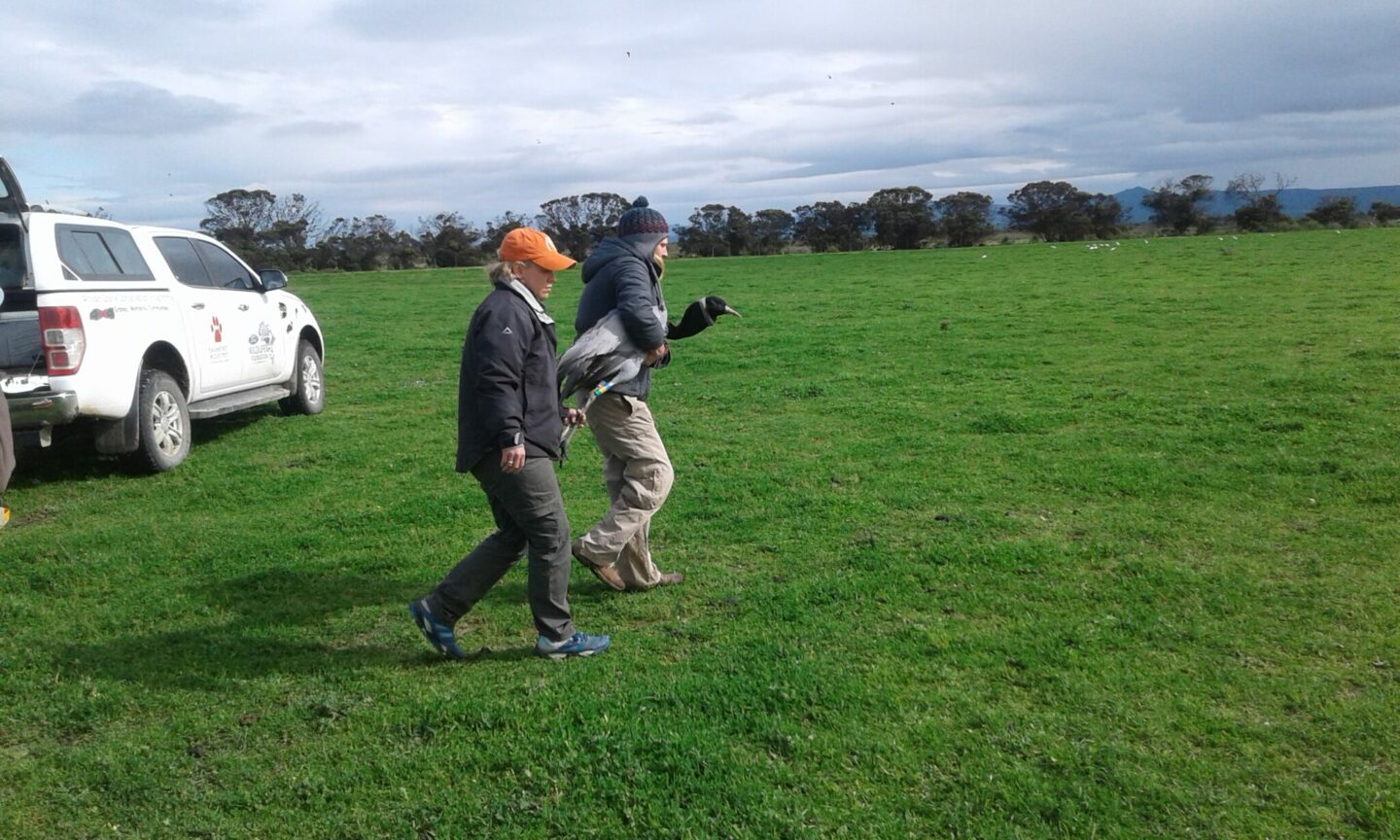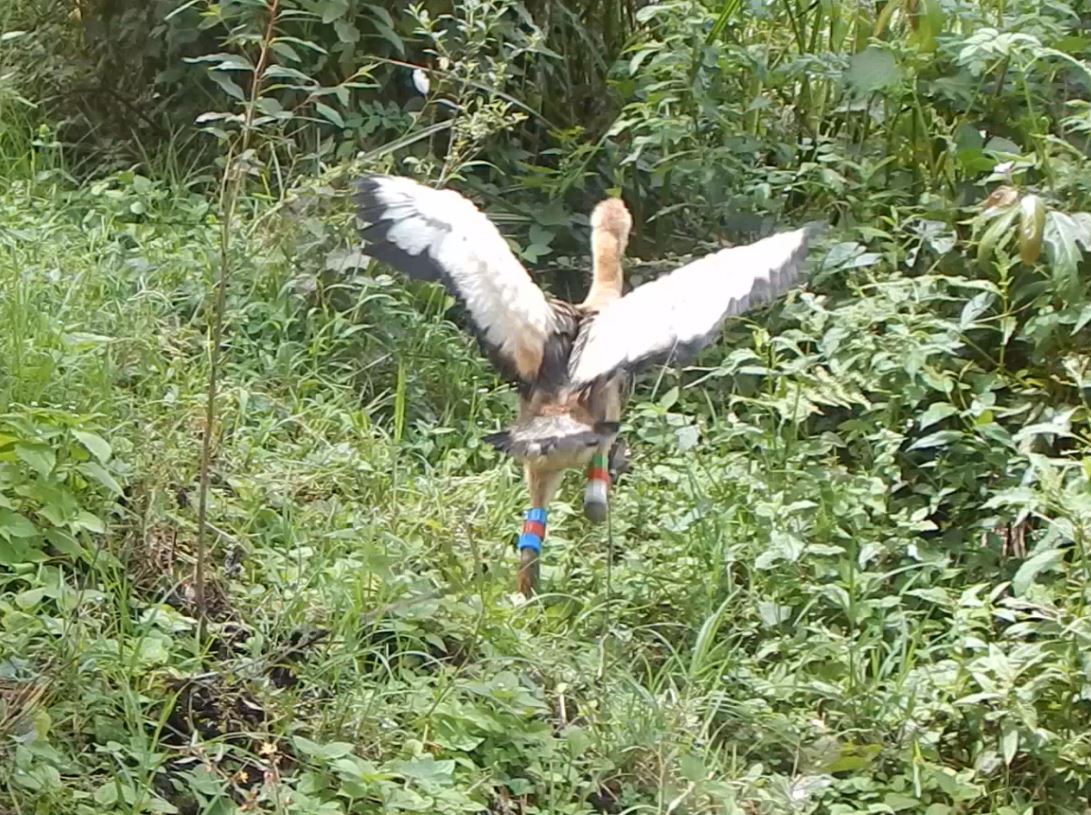IF YOU LIKE IT, THEN YOU BETTER PUT A RING ON IT
Dr Joseph Mwangi ([email protected]), Christie Craig ([email protected]), and Dr Lara Jordan ([email protected]), EWT’s African Crane Conservation Programme
The African Crane Conservation Programme focuses on conservation outcomes that align with scientific information and best practice. We pursue measurable conservation actions, one of which is the ringing of cranes. When ringed cranes are reobserved, we record their GPS point, habitat use, social grouping, and behaviour. This information collated over several years helps us to understand the populations we conserve on a deeper level: how many of the crane survive, how the population changes over time, their seasonal movements, and what the major threats are to populations. These nuggets of knowledge support further conservation action focused on addressing the causes of population declines.
One of the longest standing ringing programs is that of the Wattled Cranes within the Drakensberg. The ringing program started in 1986 and continues today with, on average, ten chicks ringed each year, and approximately 60 nests monitored each season. This involves intense on the ground surveys with efforts boosted by the annual aerial survey conducted by the EWT and the Ezemvelo KwaZulu-Natal Wildlife, the provincial conservation authority. Supportive landowners, farmers, and enthusiasts assist by recording resighting incidents through the Survey 123 phone app, email, or WhatsApp. This kind of community support provides vital information and has enabled us to determine survival rates of Wattled Cranes on the nest after fledging. Over the long-term, this enables us to monitor the movement, habitat, and how the species uses the landscape. This helps us pre-empt risks and assess threats that may affect the population, such as powerline collisions or land-use changes. This information, combined with nine satellite tracking units, has created focal points to target specific conservation action. This is vital to ensure the sustainable range expansion of the species.
Christie Craig is also studying Blue Cranes in the Western Cape by fitting the birds with rings and satellite trackers. The colour rings on their legs allow us to recognise a crane with a tracker when in the field and record our observations of the specific crane’s behaviour to understand their movements, e.g. when they are breeding. The satellite trackers give us very detailed movement data to see where and how Blue Cranes are moving, and this data can be used in myriad ways to inform conservation strategy. Our main aim with this data collection is to look at how and when Blue Cranes are flying to better understand how their flight patterns put them at risk of colliding with powerlines. Powerline collisions are one of the main threats to the species, and being able to understand collision risk informs mitigation efforts.

We were therefore excited to launch our Grey Crowned Crane ringing project in Kenya, which came hot on the heels of an agreement on country colour codes for coordinated Grey Crowned Crane ringing with other stakeholders working on cranes in East Africa. For the first time, we will be able to monitor chicks past the fledging stage, something we have not previously managed to do in East Africa. So far, 20 chicks have successfully been rung and fledged for the 2020/2021 breeding season. To supplement our efforts in sighting the ringed cranes, we will train and equip 30 community Crane Custodians who will assist in reporting any sightings of ringed chicks. Through these reports, we hope to better understand cranes’ dispersal from their breeding sites and map out key areas for cranes outside the breeding season.

